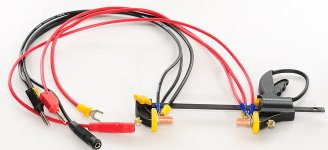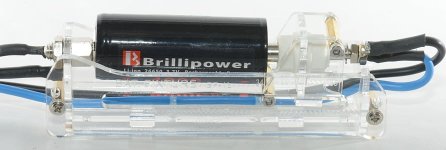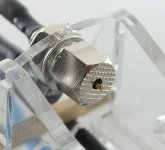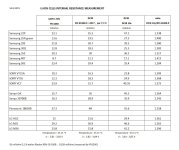Feeling a little A.D.D here, but have a few thoughts because I've been pondering these cells for a future pack build... Mostly just thinking out loud though...
The 80c max cell temperature noted in many spec sheets is the point where irreversible damage is sure to occur, not a recommendation for average use. Mooch, a well respected battery tester, seems to use this number a lot in his testing from what I can recall so i suspect it is based on the cell chemistry. If you're letting your cells get anywhere near this number during use you're pushing them way too hard imo.
These tests are done on a single cell, usually without any external cooling, so we can discern that the 40T will reach 80c with a 35 amp load applied in a free air environment under perfect conditions. That's absolute max before (presumably) immediate damage, so I'd think now would be a good time to apply the 80% rule and stay below 28 amps... in a perfect environment on the bench.
Cram them together in a pack, inside a box, under the sun and they're likely to hit that 80 celsius max at some point under 35 amps. But at what point? Is our self imposed limit of 28 amps low enough? Best bet, I would think, is to use enough of them in parallel where it almost becomes a moot point.
If you've got a 10p pack that's a 350 amp continuous discharge rating per the cell specs. 80% of that is 280 amps. Half that 350 and you've easily got 125 amps continuous on tap without the cells breaking a sweat. I would imagine cycle life would be just fine, but that's just my assumption. This thread has given me a bit of pause though because I would hate to buy 400 of them, ask 200 amps of the pack, only to find it's lost it's luster in only a couple of years. Very curious to learn the results of cycle life testing of gently used cells because I am NOT made of money.
Oh, and disregard "burst" ratings, full stop. There is no such standard and the numbers are very much arbitrary. How long is a burst? .05 seconds? 5 minutes? Without qualification it's just marketing hype. (Advice from the vape community, where thermal runaway can result in facial reconstruction or worse.)







